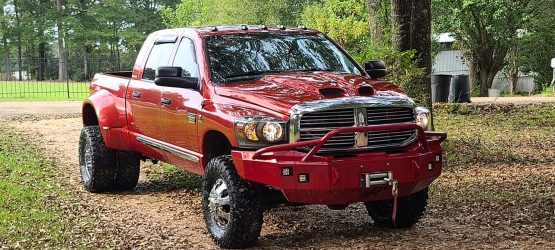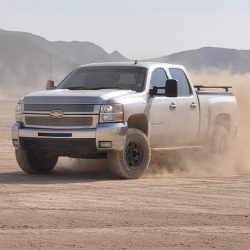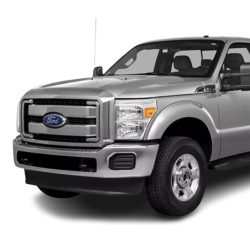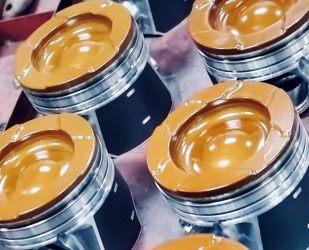Can I Resurface a 7.3 For Powerstroke Head?
The 7.3L Power Stroke engine is often overlooked when considering which engine makes the most sense for a pickup truck. However, with more than 350 hp and nearly 500 lb-ft of torque, the 7.3 is a compact powerhouse that can handle just about anything you throw at it – including a 6.7L Ford PowerStroke upgrade kit. However, even though the 7.3 and 6.7 are both from the same family of engines, there’s not as much aftermarket support for the Cummins engine as there is with other popular configurations like the 5.9 and 6.6L Duratorq engines used in Dodge Rams or Chevrolet Silverados. This article will explore everything that you need to know about upgrading a 7.3L to accept a lower-end V8 PowerStroke diesel swap kit and make the conversion yourself if you’re not fortunate enough to have an auto shop nearby that offers these services on a regular basis.
The Pros and Cons of a 7.3L Power Stroke Swap
One of the best benefits of upgrading your engine to a lower-end PowerStroke engine is that you’ll gain a significant amount of torque with minimal changes to your driving habits. The 7.3L engine has a long history of being used in commercial applications and excels at hauling heavy loads up steep inclines or pulling large boats or trailers. The added torque can also be helpful if you regularly tow heavy loads as you’ll have an easier time getting your trailer into motion from a standing stop. The primary disadvantage associated with a 7.3L Power Stroke engine swap is that it’s not as common as the lower-end 6.6L swap for an automatic transmission. It’s also more difficult to find someone who has experience with the 7.3L engine than the 6.6L because a greater number of shops specialize in the latter configuration.
Where do 7.3 powerstroke head gaskets fail?
The most common signs of a failing 7.3 Power Stroke head gasket are excessive blue smoke emissions and a rough idle. Depending on the severity of your gasket issues, you may also notice a drop in fuel economy and a drop in engine power. If you suspect that your head gasket is the root cause of these issues, you have 2 options: replace the gasket or convert your engine to a lower-end 6.6 Power Stroke swap kit. Both options are relatively inexpensive – but the conversion requires significantly less labor than replacing the gasket.
How to drain the heads powerstroke 7.3?
Before you start pulling apart the engine and removing the valve covers, you need to drain the engine oil and coolant. The best way to do this is to open the drain plug on the bottom of the engine and let all of the fluids drain into a suitable container. The next step is to remove the valve covers. There are a few different ways to do this, but the most common is to use a plastic scraper to remove the gasket and then pry the valve covers off with a set of pry bars. Once the valve covers are off, you can remove the pushrods and rocker arms. After that, you can remove the camshafts and crank and then remove the head bolts. Once the heads are off, you can also remove the intake manifold and fuel injectors if you plan to replace the head gaskets.
How to get 7.3 powerstroke heads to flow better?
To get your 7.3 Power Stroke heads to flow better, you can either machine the heads and the valves or buy aftermarket heads. If you want to perform a valve job on the heads, you need to remove the valves, remove the guides, and clean the surface of the heads. After that, you can use a valve grinding tool to adjust the valve angles and reshape the valve seats. If you want to buy aftermarket heads, you can use a 7.3 Power Stroke head flow chart to select the best option for your application. Aftermarket heads offer a significant performance advantage over stock heads, and they’re usually easier to install than a valve job.
Conclusion
The 7.3L Power Stroke engine is often overlooked when considering which engine makes the most sense for a pickup truck. However, with more than 350 hp and nearly 500 lb-ft of torque, the 7.3 is a compact powerhouse that can handle just about anything you throw at it – including a 6.7L Ford PowerStroke upgrade kit. The 7.3L engine swap has a long history of being used in commercial applications and excels at hauling heavy loads up steep inclines or pulling large boats or trailers. The added torque can also be helpful if you regularly tow heavy loads as you’ll have an easier time getting your trailer into motion from a standing stop.






Which aftermarket heads do you suggest for my 2000 Ford f250 7.3SD diesel 6 speed 2 WD?..
We can resurface your heads or do a set of remanufactured heads.
Our stage ones are plenty if you’re not planning on making more than say 500hp. If you are planning on that or more, I recommend our stage 2’s plus heavier valve springs and o-rings.